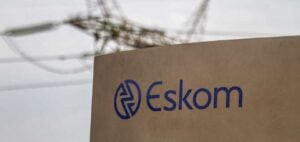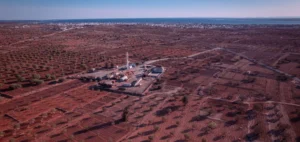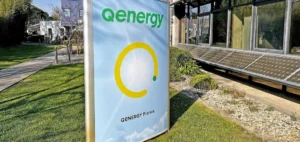Italian energy giant Enel announced Tuesday it plans to sell off €21 billion of assets as part of its 2023-2025 strategic plan to reduce debt and focus on six key markets.
This “rationalization strategy”, the bulk of which will be carried out next year, should reduce the group’s debt, 23.6% of which is controlled by the State, to between 51 and 52 billion euros by the end of 2023, compared with 58 to 62 billion this year.
In Europe, Enel intends to focus on Italy and Spain and to sell its assets in Romania. Its other key countries are the United States, Brazil, Chile and Colombia. In Latin America, Enel plans to withdraw from Peru and Argentina.
Enel intends to focus on “geographical areas that can add value despite the complexity of the current scenario, through a leaner structure and with stronger financial indicators,” summarized Enel CEO Francesco Starace.
Thanks to its new strategy, the Italian group is targeting a net profit excluding exceptional items of between 7 and 7.2 billion in 2025, with an average annual growth rate of 10-13%, compared with 5 to 5.3 billion euros in 2022.
Operating profit (Ebitda) excluding exceptional items should reach 22.2 to 22.8 billion euros in 2025, after 19 to 19.6 billion euros forecast for this year.
The group plans to invest 37 billion euros over the period 2023-2025, including around 17 billion in renewable energies, thus accelerating its green transition initiated since 2014.
These investments should enable the group to increase its renewable energy capacity by 21 gigawatts compared to 2022, reaching a total of about 75 gigawatts in 2025.
Enel will thus accentuate its “decarbonization” by focusing on renewable energies while gradually giving up coal.
In November 2021, the group brought forward its “net zero emissions” objective by ten years, from 2050 to 2040, “for both direct and indirect emissions”, an ambitious project that it confirmed on Tuesday.
In early November, Enel announced a net profit down 29.8% to 1.76 billion euros for the first nine months of 2022, despite a jump in revenue, boosted by higher prices and production.
In the first nine months of 2022, investments climbed by 17.8% to 9.3 billion euros, in order to accelerate the energy transition, the group had said.
The production of renewables now represents 48% of the total, against 40% of thermal origin and 12% of nuclear origin, had also indicated Enel.






















